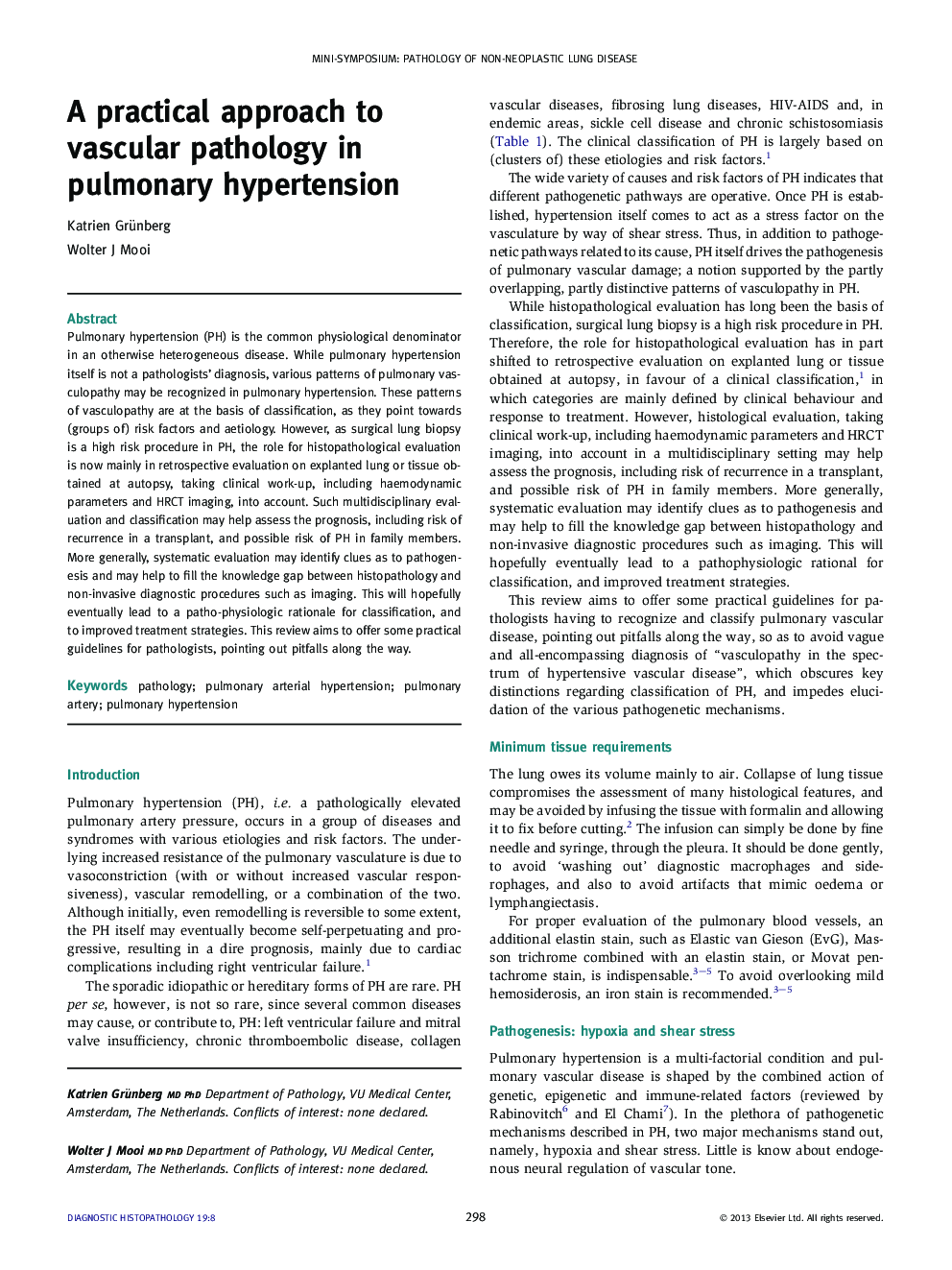| Article ID | Journal | Published Year | Pages | File Type |
|---|---|---|---|---|
| 4131124 | Diagnostic Histopathology | 2013 | 13 Pages |
Pulmonary hypertension (PH) is the common physiological denominator in an otherwise heterogeneous disease. While pulmonary hypertension itself is not a pathologists' diagnosis, various patterns of pulmonary vasculopathy may be recognized in pulmonary hypertension. These patterns of vasculopathy are at the basis of classification, as they point towards (groups of) risk factors and aetiology. However, as surgical lung biopsy is a high risk procedure in PH, the role for histopathological evaluation is now mainly in retrospective evaluation on explanted lung or tissue obtained at autopsy, taking clinical work-up, including haemodynamic parameters and HRCT imaging, into account. Such multidisciplinary evaluation and classification may help assess the prognosis, including risk of recurrence in a transplant, and possible risk of PH in family members. More generally, systematic evaluation may identify clues as to pathogenesis and may help to fill the knowledge gap between histopathology and non-invasive diagnostic procedures such as imaging. This will hopefully eventually lead to a patho-physiologic rationale for classification, and to improved treatment strategies. This review aims to offer some practical guidelines for pathologists, pointing out pitfalls along the way.
